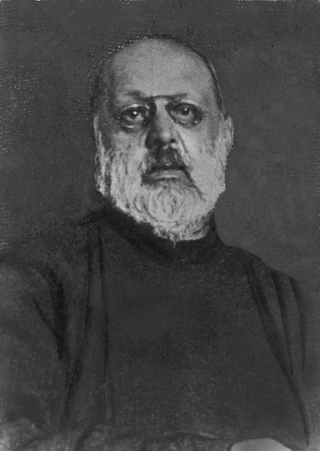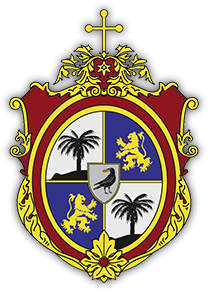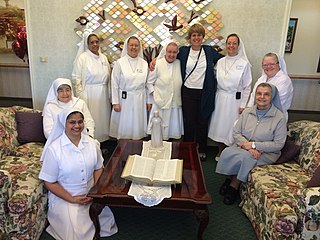
The Order of the Visitation of Holy Mary, abbreviated VSM and also known as the Visitandines, is a Catholic religious order of Pontifical Right for women. Members of the order are also known as the Salesian Sisters or, more commonly as the Visitation Sisters.

Albert Chmielowski - born Adam Hilary Bernard Chmielowski - was a Polish Franciscan tertiary, painter, disabled veteran of the Uprising of 1863, and founder of both the Albertine Brothers and Albertine Sisters servants of the homeless and destitute.
The Third Order of Saint Francis is a third order in the Franciscan tradition of Christianity, founded by the medieval Italian Catholic friar Francis of Assisi.
Paulists, or Paulines, is the name used for Roman Catholic orders and congregations under the patronage of Paul of Thebes the First Hermit. From the time that the abode and virtues of Paul of Thebes were revealed to Antony the Abbot, various communities of hermits adopted him as their patron saint.
The Little Brothers of St. Francis were members of a Roman Catholic institute of Religious Brothers founded in the Archdiocese of Boston on September 8, 1970, by Brother James T. Curran, L.B.S.F..

The Order of Saint Paul the First Hermit, commonly called the Pauline Fathers, is a monastic order of the Catholic Church founded in Hungary during the 13th century.
The Albertine Brothers are a Catholic congregation of Religious Brothers of the Third Order Regular of St. Francis, called the Servants of the Poor. They were founded in 1888 by Albert Chmielowski in Kraków, Poland.

The Congregation of Saint Michael the Archangel abbreviated CSMA, also known as the Michaelites, is a Catholic clerical religious congregation of Pontifical Right for men founded by the Blessed Father Bronisław Markiewicz, a Polish priest from Miejsce Piastowe, Poland. The Congregation of Saint Michael the Archangel is one of the 30 officially recognized groups of the Salesian Family of Don Bosco.
The Poor Brothers of the Seraphic St. Francis, abbreviated C.F.P. are a Catholic lay religious congregation of Pontifical Right for men of the Third Order Regular of St. Francis, instituted for charitable work among orphan boys and for youth education. They commonly also use the title of Brothers of the Poor of St. Francis.

Tadeusz Bohdan Isakowicz-Zaleski was a Polish Roman Catholic and Armenian Catholic priest, author and activist. He was a leader of the anticommunist student opposition in Kraków in the late 1970s, became a Solidarity chaplain in Kraków's Nowa Huta district in the 1980s, and later an avid supporter of the lustration of the Polish Church. On 3 May 2006, he was awarded the Commander's Cross of the Order of Polonia Restituta, one of Poland's highest orders. Subsequently, in 2007, he was awarded the Order of the Smile and the Polish Ombudsman's Order of Paweł Włodkowic.
A religious brother is a member of a religious institute or religious order who commits himself to following Christ in consecrated life of the Church, usually by the vows of poverty, chastity and obedience. He is usually a layman and usually lives in a religious community and works in a ministry appropriate to his capabilities.
The Missionary Sisters of the Immaculate Conception of the Mother of God are an institute of religious sisters in the Roman Catholic Church. The congregation belongs to the Third Order Regular of St. Francis. They were founded in 1910 in Santarém, Brazil, by Armand August Bahlmann, OFM, and Mother Immaculata, both natives of Germany, to educate the children of the poor throughout the world.

Maria Jabłońska - in religious Bernardyna - was a Polish Roman Catholic professed religious and the co-founder of the Sisters Servants of the Poor (1891) that she founded alongside Albert Chmielowski.

The Bishop's Palace in Kraków is the seat of Kraków metropolitan Curia, Poland, and the traditional residence of Kraków bishops since the late 14th century. It is the second largest palace in the city after Wawel, former seat of the Polish monarchs. It is part of a monastery complex of the Franciscan religious order. Bishop's Palace is best known for being the residence of Pope John Paul II during his stays in the city. He used to give his blessings and talk to his followers from a window above the main entrance at night.

The Franciscan Hospitaller Sisters of the Immaculate Conception are members of a Roman Catholic religious institute of consecrated women, which was founded in Portugal in 1871. They follow the Rule of the Third Order Regular of St. Francis. and, as the term “hospitaller” indicates, focus their ministries on a spirit of medical care. Their charism emphasizes hospitality and service under the model of the Good Samaritan. In this congregation, the postnominal initials used after each sister's name is "F.H.I.C."

Ignacy Posadzy, SChr was a Polish Catholic priest who ministered to Polish migrants from the interwar period, through World War II and during the rule of Communist Poland. At the direction of Cardinal August Hlond, he co-founded an order dedicated to serving Polish migrants, the Society of Christ.

Jazłowiec was a Polish language Catholic lyceum founded in 1863 by the Congregation of the Sisters of the Immaculate Conception of the Blessed Virgin Mary, expressly for the education of girls and young women. It took its name from its location at the time, Jazłowiec, on the Olchowiec river, a tributary of the Strypa, 16 km south of Buchach, Tarnopol Voivodeship, Galicia, now in Ukraine. During its 80-year existence it acquired great prestige for an institution of its kind and led to the order's educational expansion across land which is now Poland, Belarus and Ukraine.










